Terry clematis: varieties, planting, care and reproduction
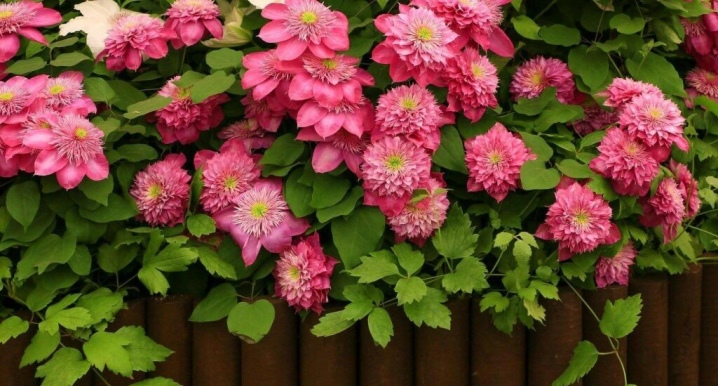
Every gardener, be it an amateur or a professional, strives to get the most unusual and original plants in his collection. Terry clematis can become such a highlight in the garden. An incredibly graceful liana is able to transform any front garden with its beauty and grace. A variety of shapes, sizes and colors amaze with their magnificence.
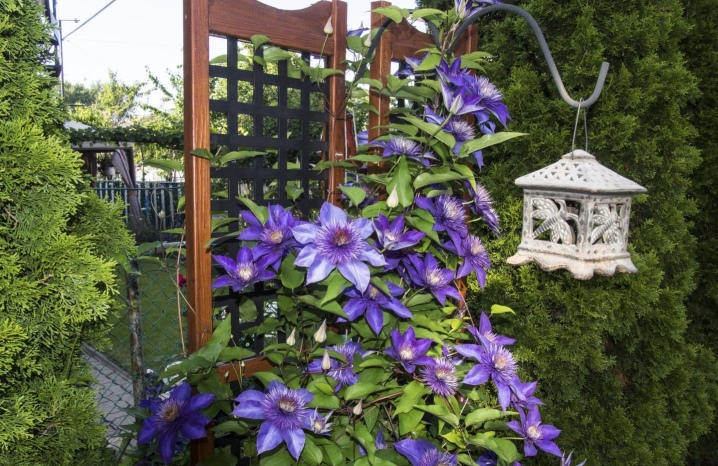
Description of varieties
Clematis have always attracted gardeners with their peculiar flowers. It is surprising that perennial woody stems are no more than a millimeter in diameter, capable of withstanding frosts down to -30 degrees Celsius. Terry clematis began to receive particular popularity.
It is noteworthy, but terry is a deviation in the structure of the flower, which is achieved through competent pruning. However, breeders consider such "ugliness" to be especially valuable.
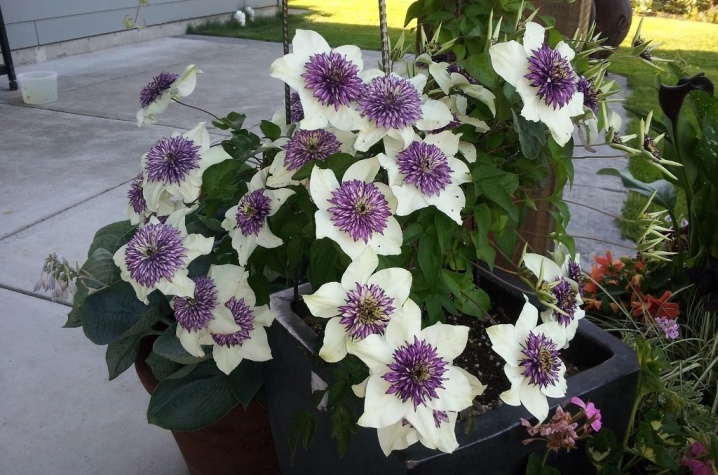
Such an interesting shape is obtained due to changes in the structure of the clematis inflorescence. They do not have stamens and pistils, but they turn into sepals, the number of which varies from 70 or more pieces.
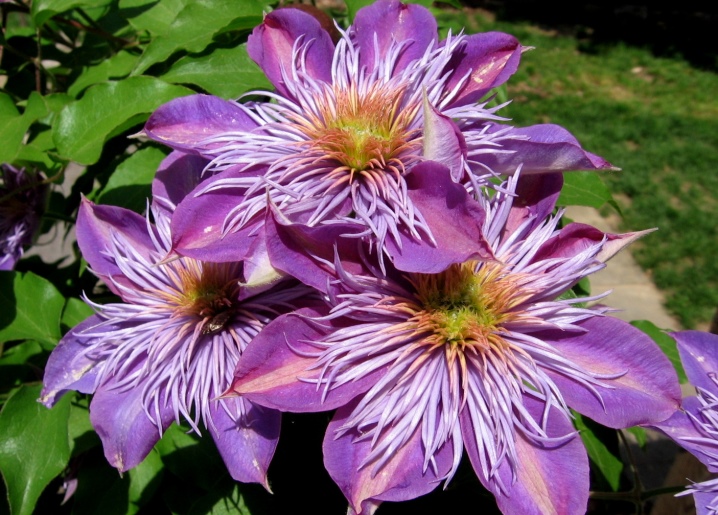
Today there are more than 300 species of this amazing plant, each with its own characteristic differences.
Teshio
Japanese variety, outwardly resembling hedgehogs with a delicate lilac color, plant height up to 3 meters.
Liana prefers sunny places. Suitable for growing in containers.
Grows rapidly and blooms profusely.
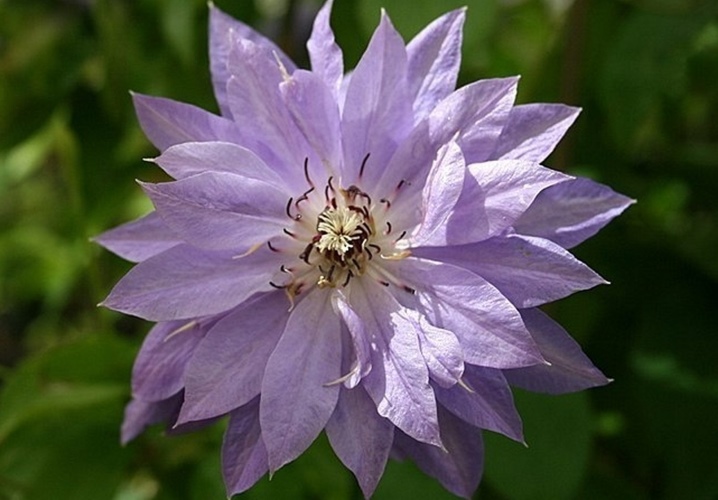
"Kante Sof Lovelace"
By planting such plants in the garden, you will receive a unique changing range of colors during the flowering period, from purple to blue and pink shades. Blooms from May to September. The height is 2-3 meters.
Loves sunny, well-lit places.
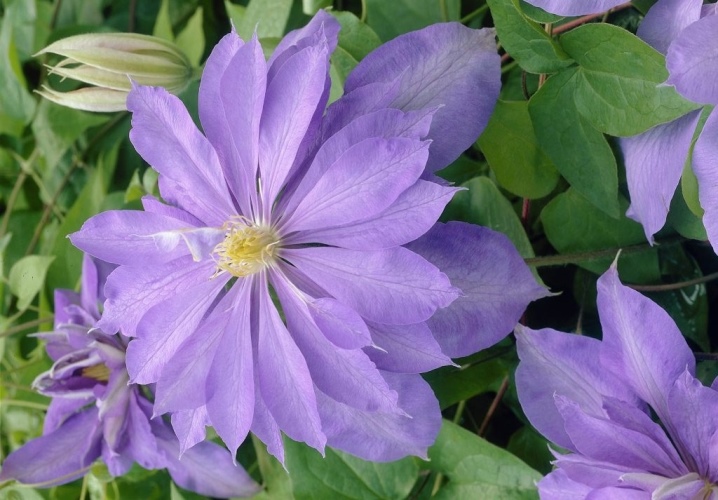
"Mazury" or "Crater Lake"
It differs from its fellows by its unpretentious care.
Feels great both in the shade and in the sun.
Large flowers are light blue with light edges. Blooms profusely from July to September. Height - 2-3 meters.
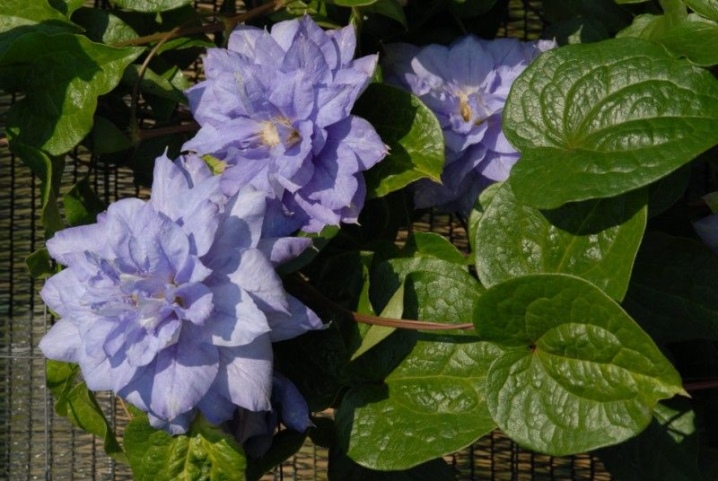
"Josephine"
Variety "founder", the name was given in honor of Josephine Hill, who discovered the peculiarity of the flower. Liana has many faces, mixed color of the rosette prevails: hot pink, dark pink, cream, purple. As a rule, the color of the petals is double. The central stripe is more saturated, gradually turning pale, opening at the edges. Flowers that have not yet fully blossomed are endowed with a greenish tint.
This variety prefers sunny locations or short-term shading. Only under such conditions can a unique and rich flowering be achieved.
In the shade, "Josephine" will lose its terry and almost completely merge with the foliage. Height - 2, -3 meters.
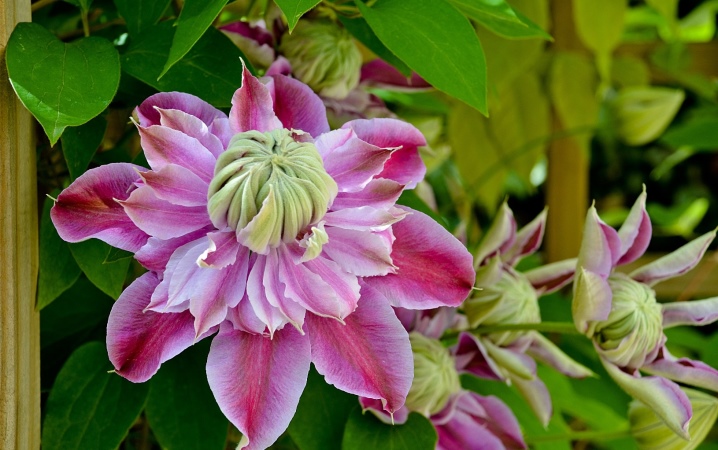
Bel of Waukeen
Clematis Bel of Waukeen needs a well-lit place, while the roots require shading. The color of the inflorescence is extremely unusual. At first, the petals have a silvery-violet hue, gradually opening up to acquire a silvery-gray color. It blooms intensively from May to August. Height - 2-3 meters.
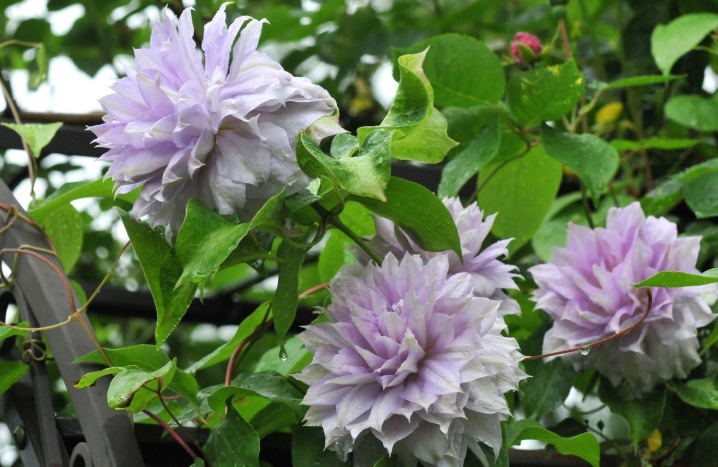
"Yukiokoshi"
Snow-white large terry inflorescences of clematis "Yukiokoshi" will not leave indifferent even the most demanding gardener. The Japanese vine variety blooms profusely from June to September. The culture is quite demanding in its care. Prefers moist, fertile soils with good drainage.
Ideal for the northern part of the country, where summer is not very hot. Frost resistant.
Height - 2-3 meters.
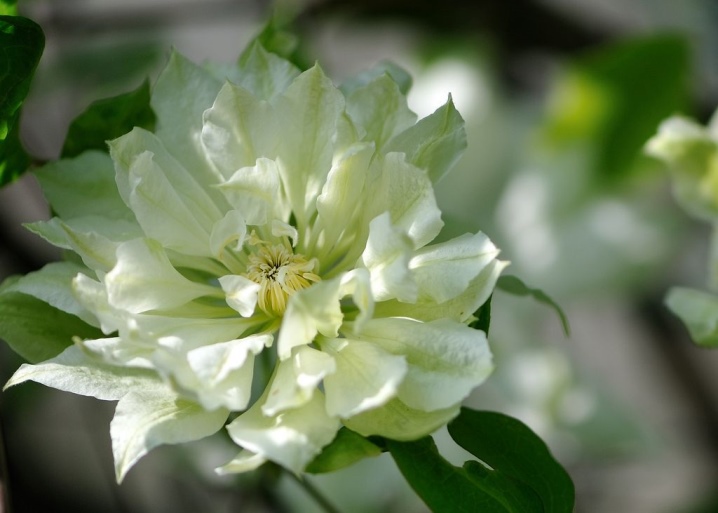
"Purpurea Plena Elegance"
Clematis "Purpurea Plena Elegance" conquers with its unusual shape of inflorescence and rich shades. It has been very popular with summer residents for more than two centuries.
Prized by gardeners for its excellent disease resistance.
Abundant bloom lasts from July to September. The buds are slightly crumpled, double, red, burgundy. Height - up to 4 meters.
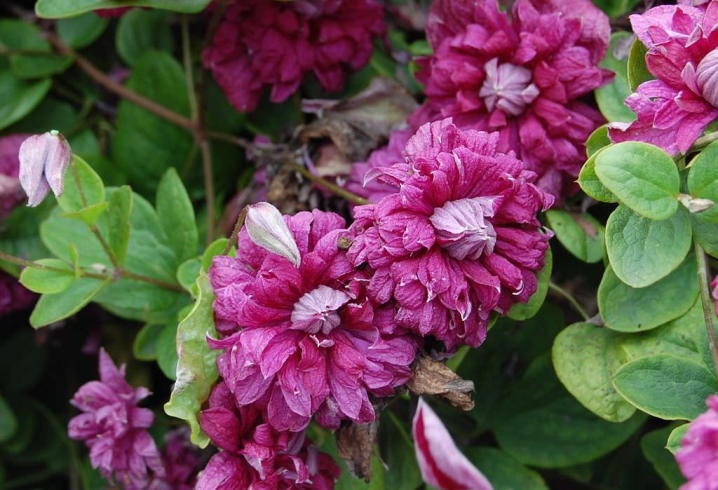
"Veronikas Choice"
An early variety of clematis, which begins flowering in April and lasts until the end of July. The second occurs in August, but not so rich, the inflorescences are semi-double or ordinary. They are quite different from other lianas in large flowers of a faded lilac shade up to 20 cm in diameter.
The bush is compact, but support is needed due to the large buds. Ideal for growing in a container on the balcony. It is planted in sunny places.
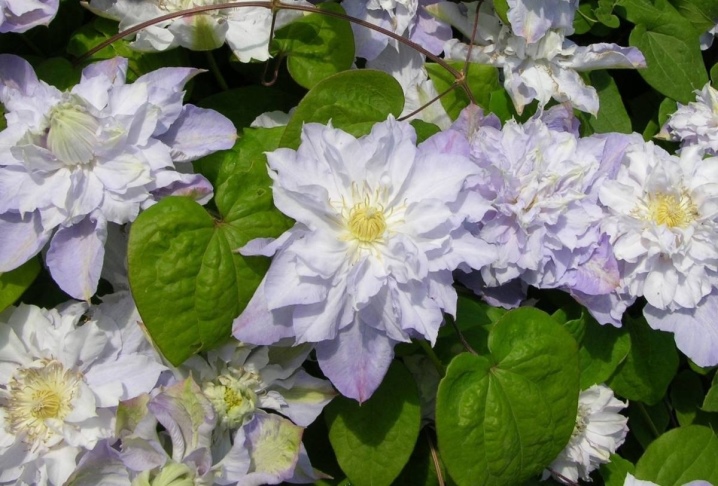
Pruning clematis into groups
In order for terry clematis to please with their abundant and rich flowering, competent pruning is required. Experienced gardeners know that there are 3 groups of pruning such vines.
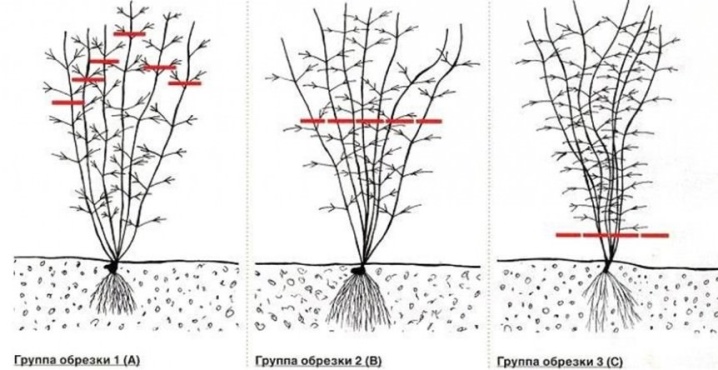
Each with its own specific fit and care.
- Group 1 includes varieties that do not require any pruning. If it is needed, then only when necessary for rejuvenation.
Buds on such plants are formed on the shoots of the last year. On young vines, they practically do not form or bloom in scanty amounts.
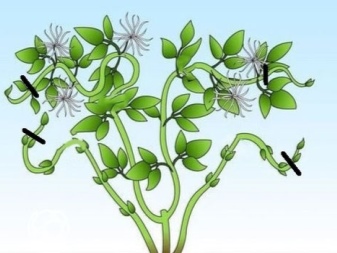
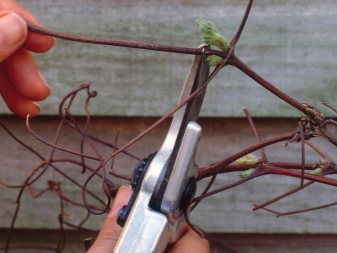
- Group 2 needs minimal pruning, a strong one can harm the bush. He will not have time to gain strength and will not endure frost, he will die. Varieties of this group bloom 2 times per season.
Pruning is best done in summer, after flowering and in late autumn.
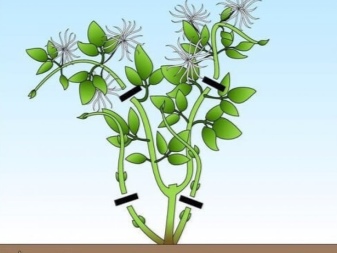
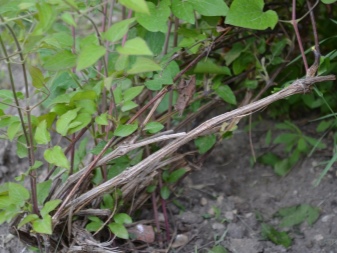
- Group 3 includes terry clematis, the flowering period of which is more than 3 months. Pruning correctly will help prepare the bush for winter. Cut off quite strongly in the middle of autumn, leaving 2-3 buds on the shoots, about 15-20 cm from the ground. If you cut it by 50 cm, then clematis will bloom several weeks earlier.
Terry flowers are formed only on the shoots of the current year. Last year's stay free or with simple buds.
Some varieties of group 3 have constant doubleness, while others, if improperly cared for, can lose such a unique quality. Due to strong pruning, many young shoots appear on the bush every year, the root system develops better.
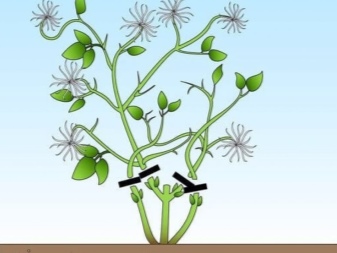
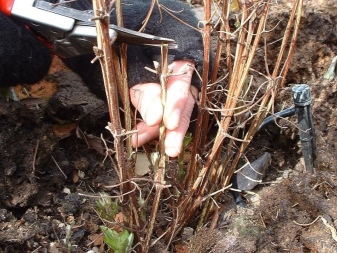
Planting, care and reproduction
Proper planting and grooming is essential, as is pruning. The most suitable time for planting clematis is spring and autumn.
The main thing here is to comply with the terms of planting.
If you delay it, then in the first year the vine will not take root well, the rooting process is much more difficult or will lead to the death of the culture. Clematis has an early growing season, untimely planting leads to a failure in its life cycle.
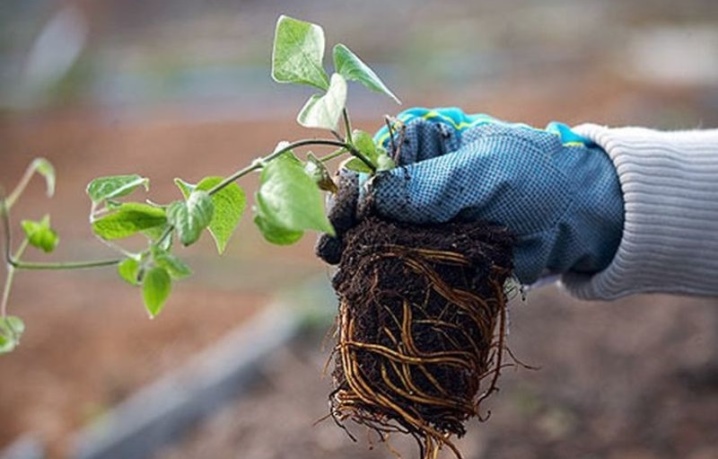
The best time for planting is April or early May, when the buds begin to swell. The hole should be wide and deep enough - 50-60 cm.
Do not forget about drainage, especially if the groundwater is close enough to the surface of the earth.
This will avoid rotting the root system. Also, when planting, add fertilizers: ash, humus, superphosphates. In the case of acidic soil, also slaked lime.

Before planting, be sure to treat the roots of the seedlings with a weak solution of potassium permanganate for disinfection and means for better rooting. After planting the vine, water it abundantly.
Since clematis are sun-loving plants, the roots do not tolerate overheating, they must be shaded.
To do this, you can plant peonies, phloxes, marigolds nearby or use mulching in the form of mowed grass and straw.

Finally, shape the top layer in the form of a mound of sand.
Such a simple manipulation will prevent rotting of the root collar. If you are replanting an already formed bush, deepen the neck of the root by about 10-12 cm, the young shoot by 5-10 cm.This will allow the bush to develop well, form new shoots, not overheat in summer and not freeze in winter.


Take care of the support. The flower is not only beautiful, but also fragile.
In addition, the support allows not only to reduce the risk of mechanical damage to the vine, but also protects the plant from diseases.
Further care for clematis takes place without much effort. Watering is required, fertilizing with mineral and organic fertilizers during growth and flowering, pruning before wintering.
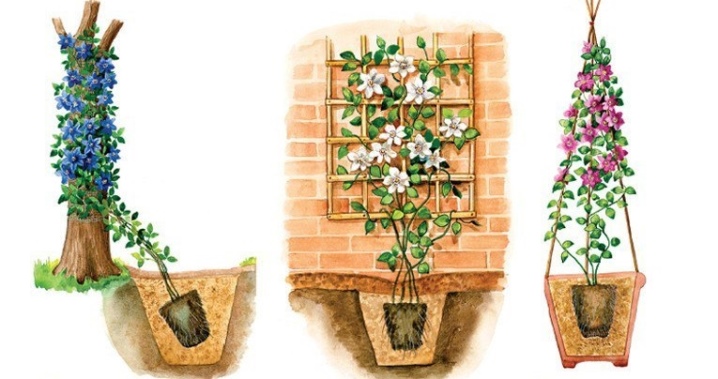
Clematis can be propagated in 4 ways: by germinating seeds, dividing a bush, layering or pinning young shoots. The easiest way is to divide a bush that is at least 5-6 years old. To propagate plants by germinating seeds requires certain skills and great effort.
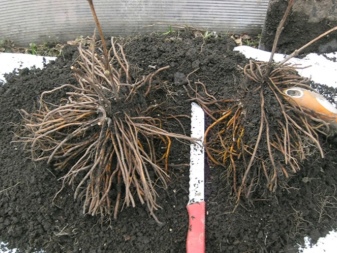
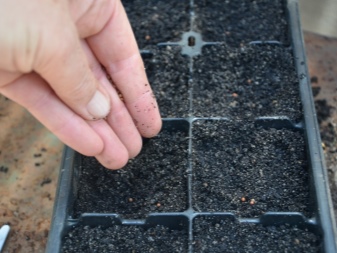
Semi-double clematis reproduces well by cuttings. To do this, you need to choose a shoot from an adult bush and put it in a previously prepared hole, sprinkle it with earth and gently water it. After a certain time, shoots form on the stem. In the fall, they are carefully dug up and transplanted to a permanent place.
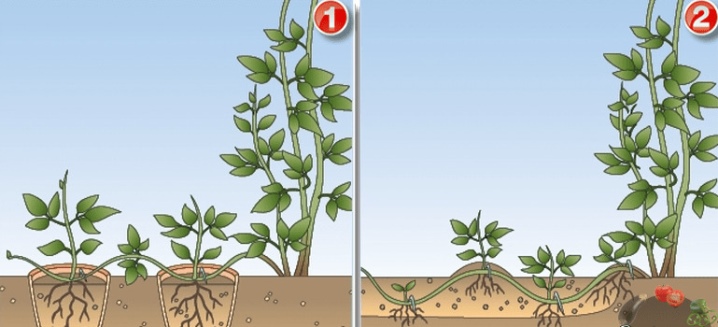
Secrets of Successful Growing
- Be patient. Terry clematis, in order to please with exuberant flowering, need to gain strength (to build up the root system and root shoots).
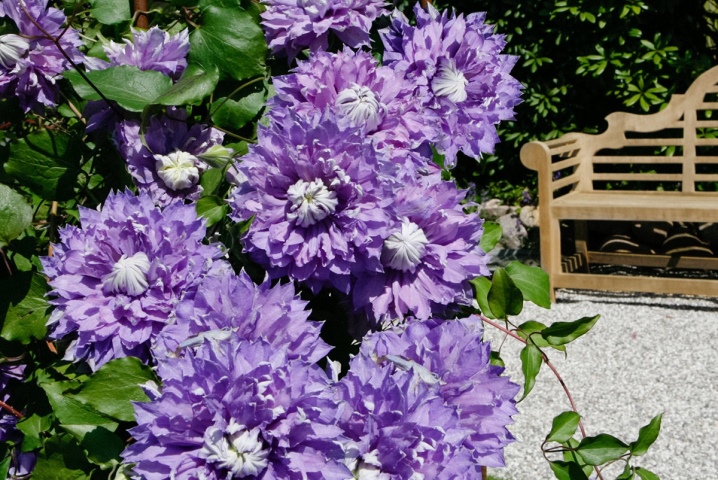
- Prune young plants during flowering. Do not allow inflorescences to bloom completely. Over the summer, they should get stronger and prepare for wintering.
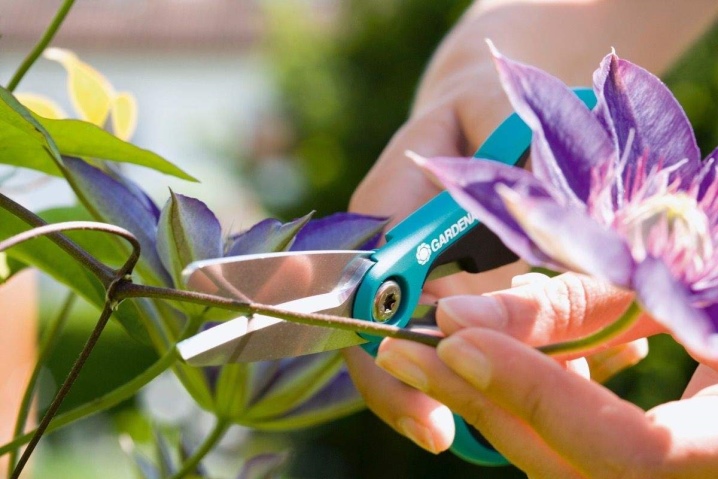
- Clematis are not afraid of severe frosts and spring frosts. However, if the winters are rather harsh, then it is better to cover the base of the vine. Avoid stagnant melt water at the roots.
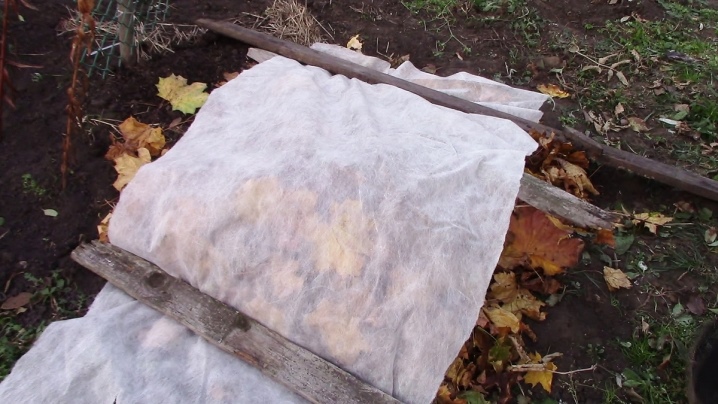
For even more interesting information about terry clematis varieties, see the next video.







































































































The comment was sent successfully.